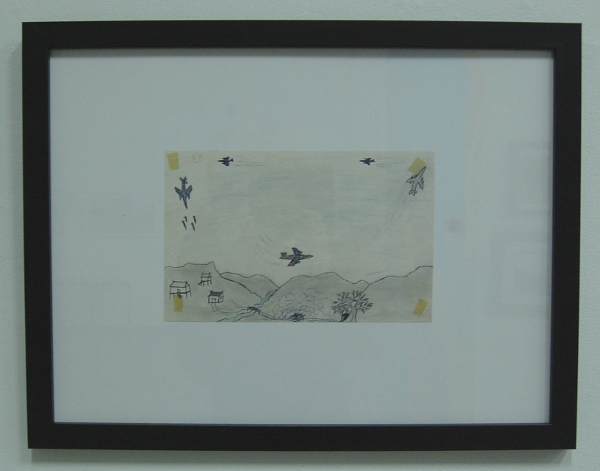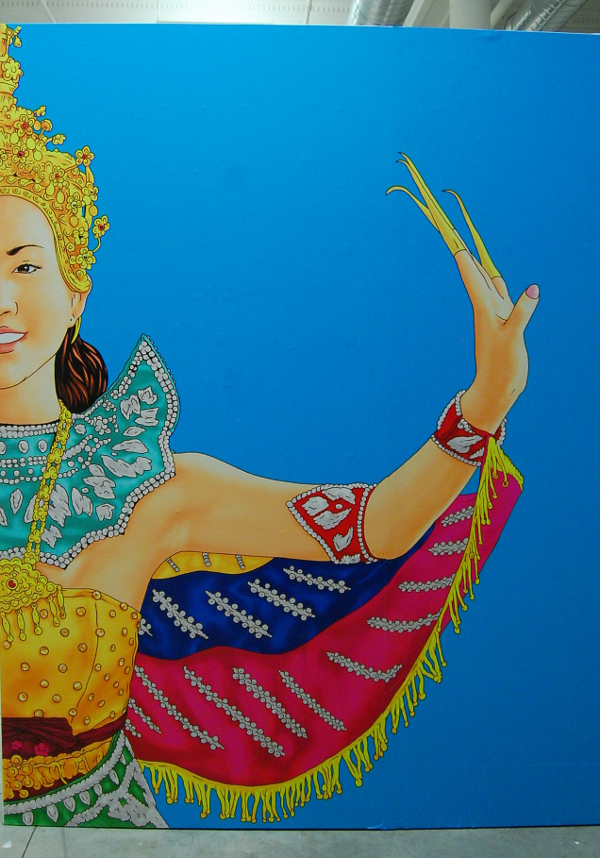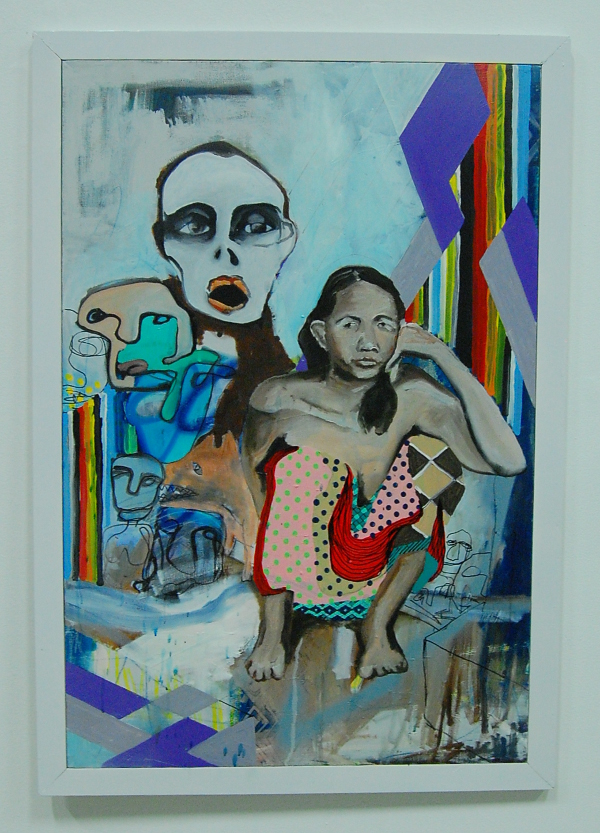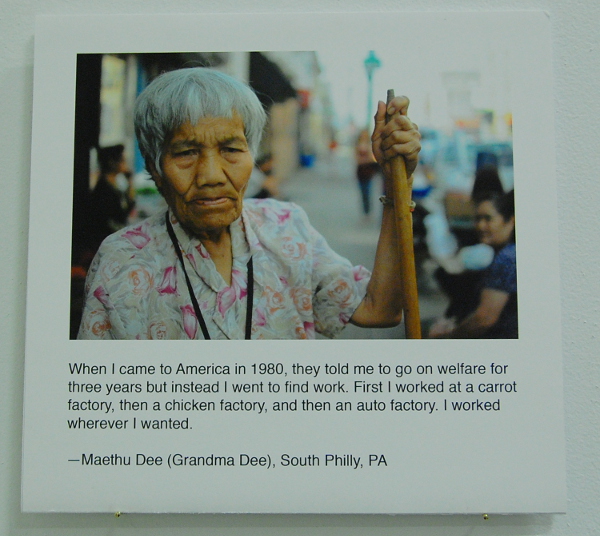
Stirring and informative images from Laos and its diaspora at Asian Arts Initiative
In order to look back at more than 40 years in diaspora, Asian Arts Initiative is currently showcasing an exhibit of artwork by Lao American artists titled “Laos in the House: Voices from Four Decades of the Lao Diaspora.”
Some of the artists have never presented work in Philadelphia before, and their subjects range from giant, colorful renditions of traditional dance attire, to eyewitness drawings of warplanes that took part in the secret United States bombing campaign during the Vietnam War, and biographical stories of how some of these refugees arrived in America. Together, these artworks help tell tales of how the war and its fallout have shaped Laos and its communities abroad.
One of the Legacies of War images showing warplanes bombing a village.
Among the most potent images are the raw, firsthand accounts of the Vietnam War, sketched by those who lived through the air war that saw some two million tons of explosives dropped on Laos between 1964 and 1973. Many people did not understand the burdens of the Lao refugees since the bombings were secret, and these untrained artists created pictures in order to relate the terror and devastation they experienced to the outside world. These drawings were shown to anti-war activist Fred Branfman, who was in Laos at the time, and his Lao friend Nguen Luangpraseuth, and they were eventually used in a U.S. Congressional hearing that helped end the bombings.
We see depictions of warplanes swooping down to fire weapons on villages, and injured or dead civilians carried away on stretchers, some of whom appear to be children. These pictures, although challenging, not only helped to put a stop to the attacks, but continue to inspire groups like the NGO Legacies of War today. Started by activist Channapha Khamvongsa, who saved these drawings from being thrown away in 2003, the group led the charge to ratify the 2010 Convention on Cluster Munitions by the United Nations, which called for an end to the manufacturing, sale and use of cluster bombs. Legacies of War remains vocal in its mission to build a peaceful future and encourage cleanup of unexploded ordinances that have killed some 20,000 people since the war ended, and still contaminate up to a third of the country’s land.
Boon Vong, “Mina.”
Turning our attention to the dazzling mural by Boon Vong at the center of the show, we are introduced to the clothing of Lao traditional dance. Theatrical dance is a staple of Southeast Asian culture, with dramatic stage performances playing out historical legends through movement, song and ornate costumes. This larger-than-life figure shows a young woman dressed in Kinnaly attire against a bright, sky blue field. Seen at such large proportions, the details of this pen and ink/CG illustration on latex are all the more visible, the bisected dancer’s outfit unfurling beneath her raised arm. Capturing the style and poise of these classical Lao forms, this artwork is all but a teaser for a full-fledged production of this kind, and it surely leaves visitors wanting more.
Chantala Kommanivanh, “Mother with 7 kids and a dog, feed 7 kids and a dog.”
Chantala Kommanivanh’s paintings are an abstracted, personal take on life in a refugee family in America. In “Mother with 7 kids and a dog, feed 7 kids and a dog,” we find a crouching, exhausted looking woman that, while loosely based on Kommanivanh’s own mother, is meant to represent all mothers that are part of this struggle. Behind and beside her, mingling with a wash of misty whitish paint and bursts of colorful patterns, we encounter her children, twisted together into a surreal protrusion of peering faces. Elsewhere, we find the artist’s niece, Vivi, sitting alone atop a building in a jumble of warped urban rooftops and windows in “Call me back at the god hour,” and a shy young boy hiding behind his older brother in “Tied up.” On the boy’s wrist, he wears a white string that symbolizes hope and good fortune in Lao culture.
Nema Etabar and Dennis Sikhanthat, “Maethu Dee (Grandma Dee), South Philly, PA.”
A series of photos with biographical captions by Nema Etebar and Dennis Sikhanthat round out the exhibit by bringing us face-to-face with actual Lao refugees who now live in America. Each small paragraph tells their history in their own words, representing a small but important summary of actual peoples’ lives. In the photo “Maethu Dee (Grandma Dee), South Philly, PA,” we learn how Dee was told to go on welfare when she arrived but instead sought out work immediately, variously finding jobs at a carrot factory, chicken factory and auto factory. “I worked wherever I wanted,” she says. Her determination and resolve, among so many stories and some difficult bodies of work, should remind of both the pain and the power that are a part of this community.
“Laos in the House” will be on display through May 1. The exhibit was primarily funded through a Knight Arts grant.
Asian Arts Initiative is located at 1219 Vine St., Philadelphia; 215-557-0455; asianartsinitiative.org.
Recent Content
-
Artsarticle ·
-
Artsarticle ·
-
Artsarticle ·




